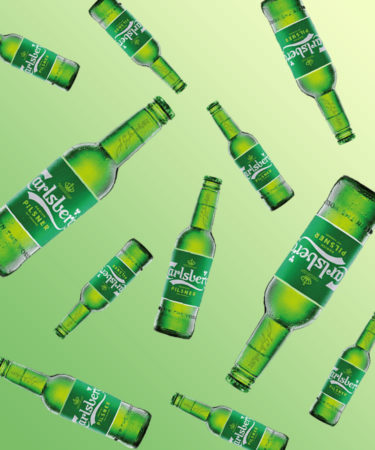Carlsberg, perhaps best known for its eponymous pilsner, produces much more than one beer. The Copenhagen-based brand operates 75 breweries in 33 countries, employs upwards of 40,000 people, and produces hundreds of brands — including a famous lager from Brooklyn.
From its founding in 1847, to a TEDx talk led by its deceased founder in 2017, here are eight more things you should know about Carlsberg.
It’s over 170 years old.
J.C. Jacobsen founded Carlsberg outside Copenhagen in 1847. The brewery was named after his son, Carl, and the Danish word “bjerg,” meaning “hill.”
Carlsberg does a lot more than brew.
In 1875, J.C. Jacobson founded the Carlsberg Laboratory to study malting, brewing, and fermentation. In 1876, he established the Carlsberg Foundation to oversee the lab and to support scientific research in Denmark.
Today, the Carlsberg name includes the Carlsberg Group, Carlsberg Research Laboratory, three foundations, and two museums.
Carlsberg changed brewing forever.
In 1883, a professor named Emil Christian Hansen became the first to isolate a pure yeast culture that revolutionized the beer industry. J.C. Jacobsen shared the discovery (and the yeast, cleverly named Saccharomyces carlsbergensis) with other brewmasters, helping to improve beer quality all over the world. A “Carlsberg type” Bohemian lager yeast strain, Saccharomyces pastorianus, is now the most widely used lager strain in the world.
Carlsberg is serious about sustainability.
In October 2019, Carlsberg announced the imminent launch of a paper beer bottle, the latest in its packaging innovations and one of many initiatives the brand is pioneering to stay earth-friendly. In 2018, it launched its “Snap Pack,” a packaging innovation that eliminates 6-pack rings by “snapping,” or stacking, beer cans together. It earned the Sustainable Development Goals Silver Lion award in 2019.
Carlsberg wants you to drink in your ‘green zone.’
Sustainability isn’t the only place Carlsberg is going green. The brewery promotes finding your “green zone” of responsible consumption. The brewery’s website defines this as the “alcohol ‘comfort zone’ where drinking is part of your good time… To know what your green zone is means to be able to drink respecting your limits and to enjoy the night and the fun for longer.”
Carlsberg invented beer caviar.
About 135 years after inventing the lager yeast that changed the world, Carlsberg created artificial caviar using its beer for the 2018 World Cup. The company worked with CP+B Copenhagen and Danish chef Umut Sakarya to create the product in honor of its status as the official sponsor of the Danish national team.
A brewery in Sweden has Carlsberg and Brooklyn Brewery to thank.
In 2014, Carlsberg partnered with Brooklyn Brewery to launch Nya CarnegieBryggeriet, a sister brewery in Stockholm. The brewery name means “New Carnegie Brewery,” a reference to Sweden’s oldest beer, D. Carnegie.
Carlsberg also produces Brooklyn Lager as part of its craft and specialty portfolio.
Carlsberg’s founder gave a posthumous TEDx talk.
In 2017, a TEDxCopenhagen event with the spooky theme, “Trust Uncertainty,” included an unexpected presenter: Carlsberg founder J.C. Jacobsen. He was brought “back to life” via hologram. According to a press release, the sci-fi stand-in even interacted with guests and answered questions from the audience.
